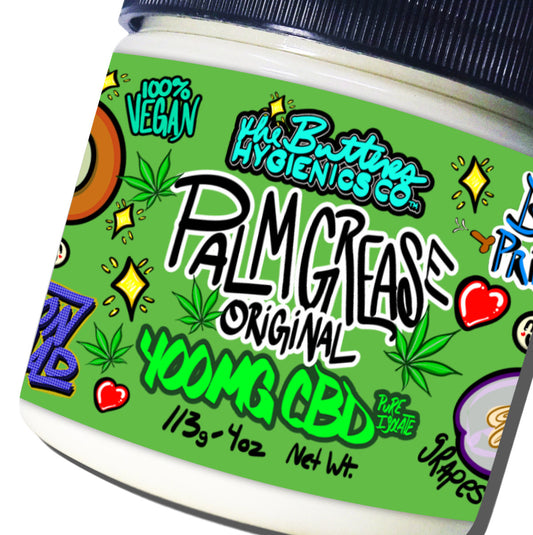
The Ultimate Guide to Sexual Health for Bisexual and Pansexual People
Share
Navigating the world of sexual health can be tricky for anyone, but for bisexual and pansexual individuals, unique challenges and considerations can come into play. This guide aims to provide you with comprehensive, practical, and non-judgmental information to help you take charge of your sexual health.
Understanding Sexual Health
Sexual health is not just about preventing diseases; it’s about overall well-being, enjoying a satisfying sex life, and feeling good about your body and sexual choices. Here are the key components:
- Physical Health: Preventing and treating STIs, maintaining reproductive health.
- Emotional Health: Building healthy relationships, managing stress and mental health.
- Social Health: Navigating social norms, stigma, and accessing supportive communities and services.
Common Myths and Misconceptions
- Myth: Bisexuality and pansexuality are just phases.
- Fact: Sexual orientation is a valid and enduring aspect of who you are.
- Myth: Bisexual and pansexual people are more promiscuous.
- Fact: Sexual orientation does not determine sexual behavior or number of partners.
- Myth: Only certain groups are at risk of STIs.
- Fact: Anyone who is sexually active can be at risk of STIs.
Are bisexuals at greater risk of hiv and other STIs?
Yes, bisexual individuals can be at a greater risk of HIV and other sexually transmitted infections (STIs). This increased risk is associated with several factors:
- Sexual Behavior: Bisexual individuals may have sexual partners of different genders, potentially increasing their exposure to diverse sexual networks. If either partner is already infected with an STI, the likelihood of transmission increases.
- Stigma and Discrimination: Bisexual individuals often face unique stigma and discrimination, which can lead to mental health issues, substance use, and engagement in riskier sexual behaviors. This can indirectly increase their risk of contracting STIs.
- Access to Healthcare: Bisexual individuals might experience barriers to accessing healthcare due to stigma, discrimination, or lack of culturally competent healthcare providers. This can result in fewer screenings, delayed diagnoses, and untreated STIs.
- Awareness and Education: There may be gaps in sexual health education tailored to the specific needs of bisexual individuals. Without targeted education, they might not be fully aware of the risks or the necessary precautions to take. That's we're this guide comes in.
Safer Sex Practices
- Use Protection: Consistently use condoms, dental dams, and other barriers to reduce the risk of STIs. Remember, STIs can be transmitted through vaginal, anal, and oral sex.
- Regular Testing: Get tested for STIs regularly, especially when you have new partners. Early detection is key to treatment and prevention of transmission.
- Open Communication: Discuss sexual health openly with your partners, including STI status, testing history, and boundaries.
- Limit Alcohol and Drug Use: Substance use can impair judgment and increase the likelihood of risky sexual behavior.
Prep!
Not just for gay men, all bisexual people need to be on PreP to protect themselves against HIV. Everyone has to do their part to end new infections once and for all! Learn more about PreP here!
Navigating Healthcare
- Find an Inclusive Provider: Look for healthcare providers who are knowledgeable and supportive of bisexual and pansexual identities. Don’t hesitate to ask about their experience with LGBTQ+ patients. However, keep in mind, old school, pro-dignity providers will offer the best balance of acceptance and caution.
- Be Honest: The three people you always to the IRS, your hairstylist, or your Doctor. Be open with your healthcare provider about your sexual orientation and behaviors. This information is crucial for receiving appropriate care and recommendations.
- Seek Regular Check-Ups: Regular visits to the doctor are important for monitoring your overall health, including sexual health.
Mental and Emotional Well-Being
- Combat Stigma: Recognize and challenge internalized stigma and seek out supportive environments where your dignity is upheld.
- Mental Health Support: Therapy and counseling can be valuable for managing stress, anxiety, and other mental health issues that may arise from societal pressures and discrimination.
- Build Support Networks: Connect with other bisexual and pansexual individuals through support groups, online forums, or community organizations.
Resources
- LGBTQ+ Centers: Many cities have LGBTQ+ centers that offer health services, counseling, and support groups. I've personally used and recommended them for decades.
- Online Resources: Websites like Planned Parenthood, the CDC, and LGBTQ+ health organizations offer valuable information and resources.
- Hotlines: Hotlines like the Trevor Project provide immediate support for mental health crises.
Conclusion
Sexual health is a vital part of your overall well-being. By taking proactive steps to protect yourself, seeking supportive and inclusive healthcare, and maintaining open and honest communication with your partners, you can enjoy a healthy and fulfilling sex life. Remember, your identity is valid, and taking care of your sexual health is an important part of loving yourself.
Stay safe, stay informed, and celebrate your bisexual and pansexual identity with pride!




